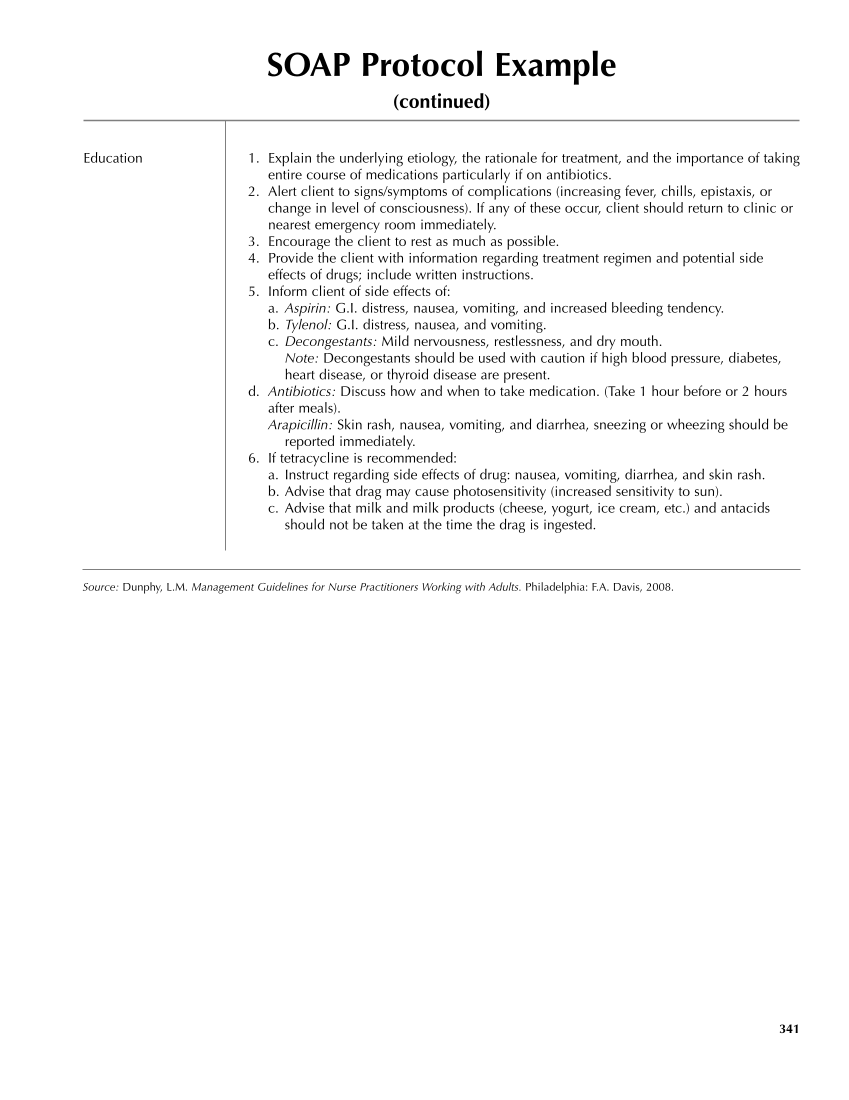1. Explain the underlying etiology, the rationale for treatment, and the importance of taking entire course of medications particularly if on antibiotics. 2. Alert client to signs/symptoms of complications (increasing fever, chills, epistaxis, or change in level of consciousness). If any of these occur, client should return to clinic or nearest emergency room immediately. 3. Encourage the client to rest as much as possible. 4. Provide the client with information regarding treatment regimen and potential side effects of drugs include written instructions. 5. Inform client of side effects of: a. Aspirin: G.I. distress, nausea, vomiting, and increased bleeding tendency. b. Tylenol: G.I. distress, nausea, and vomiting. c. Decongestants: Mild nervousness, restlessness, and dry mouth. Note: Decongestants should be used with caution if high blood pressure, diabetes, heart disease, or thyroid disease are present. d. Antibiotics: Discuss how and when to take medication. (Take 1 hour before or 2 hours after meals). Arapicillin: Skin rash, nausea, vomiting, and diarrhea, sneezing or wheezing should be reported immediately. 6. If tetracycline is recommended: a. Instruct regarding side effects of drug: nausea, vomiting, diarrhea, and skin rash. b. Advise that drag may cause photosensitivity (increased sensitivity to sun). c. Advise that milk and milk products (cheese, yogurt, ice cream, etc.) and antacids should not be taken at the time the drag is ingested. 341 Education SOAP Protocol Example (continued) Source: Dunphy, L.M. Management Guidelines for Nurse Practitioners Working with Adults. Philadelphia: F.A. Davis, 2008.
Purchased from OEM Press by (ge corporate access). (C) 2013 OEM Health Information, Inc. All rights reserved.












































































































































































































































































































































































































































